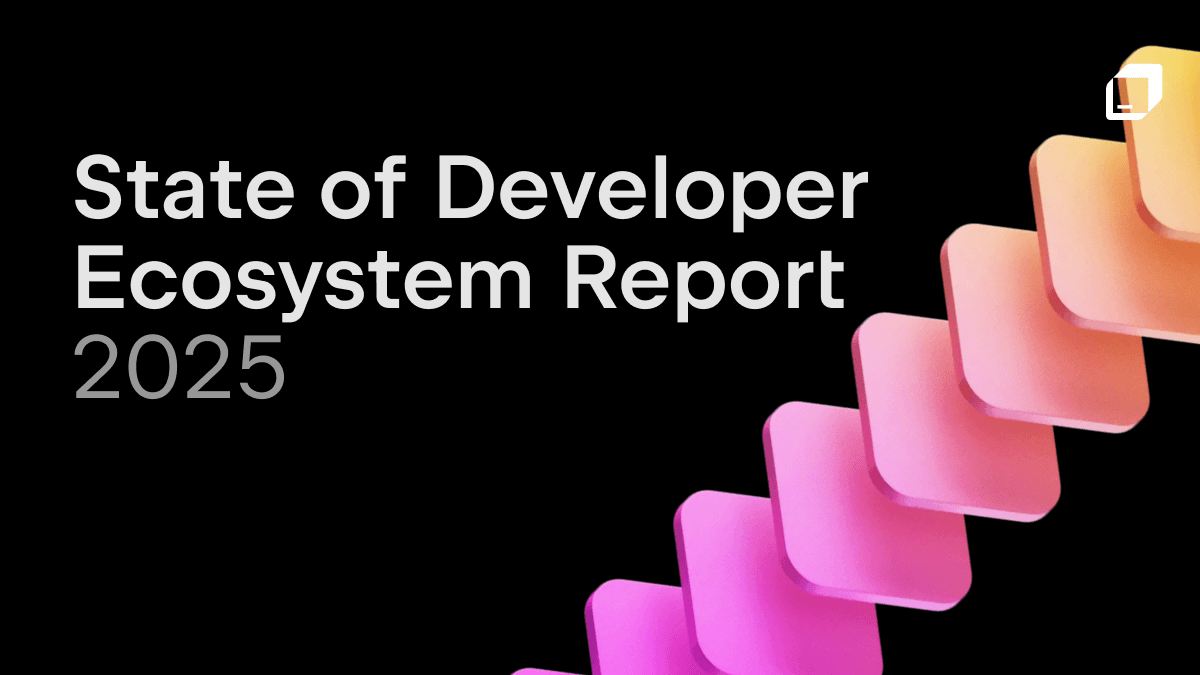JetBrains Research
Research is crucial for progress and innovation, which is why at JetBrains we are passionate about both scientific and market research
Developer Ecosystem Survey Insights: A Comparative Look at Students and Professionals
Our series exploring how market and user research is done at JetBrains continues. Want to learn more about research insights and take part in future JetBrains studies? Join our JetBrains Tech Insights Lab!
The world of IT is a rapidly growing industry, attracting more and more people with a passion for creative and challenging tasks. With the increasing demand for technology in every aspect of life and business, the industry offers a diverse range of career paths for newcomers.
Every year, around 30,000 respondents take part in our Developer Ecosystem Survey. These include both professionals in the industry and those just starting in IT, like students and career switchers. With the data we’ve gathered, we’re able to get insights into how developers at all stages of the journey – but especially newcomers – are approaching the tech world.
We’ve looked at the data collected in Developer Ecosystem Survey 2023 and compared responses given by students and professionals on various topics related to programming languages, tools, technologies, and activities. In this blog post, our goal is to offer you valuable insights into the exciting world of technology and skills that are in high demand, while also highlighting the diversity of career paths available in IT for newcomers. As a bonus, we’ll share career advice from our colleagues at JetBrains to help guide those embarking on their IT journey.
Table of Contents
Education
Most people’s journey into the world of programming begins with education. For both students and professionals, formal education emerges as the primary stepping stone toward a career in software development. This initial foray into the world of programming is often facilitated through university programs and structured courses. Free online courses and code schools follow closely. Among students, this approach is particularly prominent, with 17% indicating that it facilitated their entry into the world of IT. With the blossoming of learning platforms that has begun in recent years, this way of learning is likely will take an increasing share as an affordable and flexible option.
Computer science and software engineering are the two most frequent majors among our respondents.
When it comes to gaining new knowledge, both students and professionals go for video and written learning content in equal measure.

A Product Marketing Manager is the intersection between product, marketing, and sales. If somebody wants to become a Product Marketing Manager, they do not need to be experts in everything at once. You can just be good at one thing, and you’ll learn the rest. So, my major advice is to be ready to learn.
Oscar Rodriguez, Product Marketing Manager
Technologies and tools
While both students and professional developers are heavily involved in coding and programming, a closer look reveals some distinctions:

- Students are more likely to be involved in academic research (33% vs. 8%), machine learning (24% vs. 10%), UX/UI design/research (16% vs. 10%), and graphics design/art (11% vs. 6%). In contrast, professionals are more likely to be involved in testing (47% vs. 27%), code reviewing (59% vs. 24%), deployment (40% vs.18%), DevOps activities (29% vs. 10%), and system design (43% vs.15%). These differences likely stem from the specific demands and amount of experience sought in each field.

- Compared to professionals, students tend to lean more toward creative and user-centric activities: websites (58% vs. 51%), utilities (43% vs. 33%), and games (20% vs. 8%). Professionals are more involved in foundational and architectural aspects of technology: system software (25% vs. 18%) and IT infrastructure (21% vs. 11%).

- Professionals tend to use a wider range of tools compared to students, with more significant differences observed in using Issue trackers and CI/CD. Notably, the use of cloud-based editors or IDEs is more common among students.
I would recommend that beginner software developers take up a side project and develop something totally on their own, because then you get exposed to a lot more than just maintaining a piece of software. You get more experience as you go through the whole development lifecycle. Also, you can work on something fun, too. For example, I am involved in a music streaming site for tabletop role-playing games.
Bruce Hamilton, Full-Stack Software Developer
It’s really useful to create demo pages and replicate the technologies you see around you. For example, if you visit your favorite store’s website and see something interesting there, try to understand how it’s built. In the process, you also enhance your portfolio.
Liana Gukasyan, Frontend Developer
Programming languages
The top languages among professional developers and students are almost the same.
The top most used languages among students are Python, JavaScript, HTML / CSS, Java, SQL, C++, and C. Also, students significantly more often use C, C++, Python, Java, HTML / CSS, MATLAB, Assembly, and R than professionals do. In turn, professionals are more likely to use TypeScript, Shell scripting languages, Go, GraphQL, and SQL.
The popularity of C++ and C among students can be explained by the fact that these languages are often taught within the curriculum at different educational institutions to introduce the basics and logic of programming. In turn, Python is gaining popularity among students thanks to its approachability and wide usage in data analysis.

Remote and collaboration development
As the popularity of remote work continues to grow, remote collaborative development has become a cornerstone, allowing both students and professional developers to collaboratively shape code, exchange insights, and troubleshoot in real time.
- Video calls with screen sharing have become the go-to method for remote collaborative development, prevailing among both students and professional developers. However, the share of students using screen sharing is slightly smaller. Students, more often than professionals, use an editor or IDE with collaboration features for remote collaborative development.
- Common scenarios for collaborative development resonate across both groups, encompassing situations demanding assistance and bug fixing. Some natural differences are that students use collaborative development more often when learning something new, and professional developers take a collaborative approach when teaching. However, the distinction between the two groups in this aspect is minimal.

Lifestyle and media
As we explored Developer Ecosystem survey results beyond the technology landscape, we discovered several things that define the hobbies and leisure activities of students and professionals:
- Students showcase a marked preference, with a substantial 80% leaning toward community forums as their primary source of information. In addition to forums, YouTube (70%) and social media (54%) also emerge as two other prominent information hubs among students.

If you want to get into technology, remember that taking extra courses and staying curious sets you apart. Being proactive matters too. Another important thing is to make connections with the people in your field of interest. You can learn a lot from them.
David Watson, Content Marketing Writer
- In terms of hobbies, both students and professionals have technology-driven interests. The top three leading hobbies among students and professionals are the same – programming, video games, and watching TV / video-streaming services.

Checklist: Career advice for IT newcomers
Finding your first job and getting an interview can be very exciting and stressful at the same time. An action plan can help you get rid of uncertainty and cope with stress. The checklist contains HR team recommendations for your job search and things to do before an interview. We have added some tips and tricks shared by our experts, which might help find your first job in IT.
“An important piece of advice is actually being able to take advice”
David Watson, Content Marketing Writer
It was really difficult to change careers. I did it twice. I had a lot of doubts for a long time about whether I’d done the right thing. If you know, in your heart, that you’re not in the right career, it’s never too late to change. And even if it feels like I spent my entire 20s setting myself up for a long career and I basically threw 50% of it away, it was completely worth it. I chose to do what I was really passionate about, and it completely paid off.
Jodie Burchell, Developer Advocate in Data Science
Subscribe to JetBrains Research blog updates












